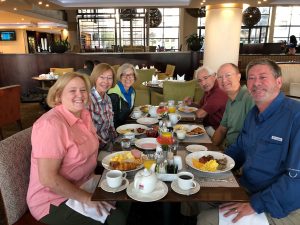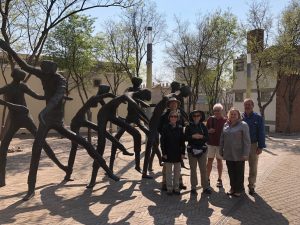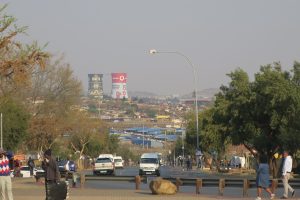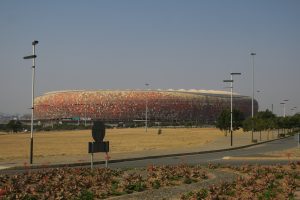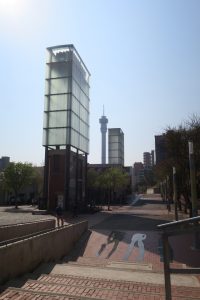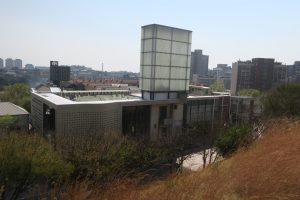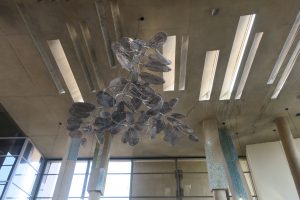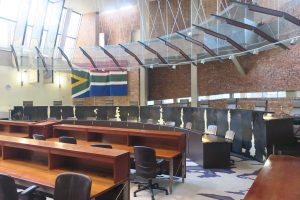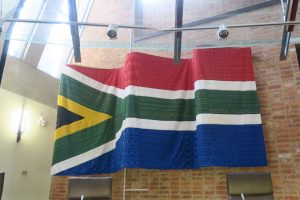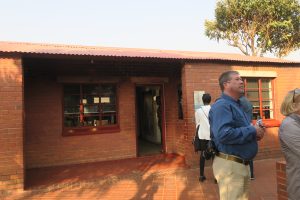The flights were long but we made it to Johannesburg. We were met by our tour company as soon as we came through the jetway. We were whisked through immigration and customs. Our hotel is attached to the airport so we just walked to it. We got off the plane at 9 and were in our hotel room by 9:30. We pretty much just fell into bed. Luckily we were able to sleep until the alarm went off at 7.
We met Patty, Tim, Kay, and Mike at breakfast.
Our tour guide, Jo, met us in the lobby. After a brief discussion with her, we decided we would go to Constitution Hill, Apartheid Museum and Soweto.
A little bit of background about Jo’burg as it’s called. It was originally built for the whites and the nonwhites were housed outside the city. The whites represent 9% of the population. Now that people are free to live anywhere and more and more people are picking Jo’berg, it’s infrastructure is really being taxed. Jo’berg also contains a lot of art and graffiti to beautify the city. The city was built where gold was originally found and not on a water source. Here are a couple of pictures of J’berg.
First stop Constitution Hill. There was a jail for political activists opposed to apartheid and common criminals. Nelson Mandela and Mahatma Gandhi were held here. Most of it was torn down to make space for the Constitution Court of South Africa. They left the stairwells as a reminder of how South Africa has overcome the dark days of oppression. The court is the equivalent of our Supreme Court, except it has 11 justices. We went inside the court. Inside is meant to look like an open space under the trees because traditionally in the village that was where judgements were made. In the lobby area they had sculptures hanging from the ceiling which looked like tree boughs and the rug was meant to look like dappled light. Here are some pictures of court and art
After exploring the court we went to the Apartheid Museum. Apartheid was a system of institutionalized racial segregation that existed in South Africa from 1948 until the early 1990s. At the time whites represented 8% of the population and nonwhites represented 92%. It was really awful how the government treated the non whites. Jo guided us through the history and the evolution of the Apartheid system. At the museum the movies of the violence in the streets were so disturbing that I had to leave the room. You were not allowed to take pictures at the museum. We had a nice lunch at the museum restaurant.
Then we drove to Soweto, an Apatheid township. Initially it was outside the city but now the city has grown and incorporated it. When it was built it did not include places for people to purchase food and anything else they need. It didn’t get electricity until the 70’s. Although the people in Soweto were expected to come into the city to work for the whites there was no transit system for them to get there. The houses were quite small and very close together (the whites didn’t want them to have enough room to farm.). We went by Winnie Mandela’s house and then went to Nelson Mandela’s home. Winnie lived there while Nelson was in prison. There had been a brick wall separating the kitchen and the living room that Winnie and her daughters could hide behind when they were being harassed by the police which was a frequent occurrence. Here are a picture of Manela’s house.
That evening we went to Wimpy’s, a hamburger place at the airport. It was not fine dining but it was just fine.

